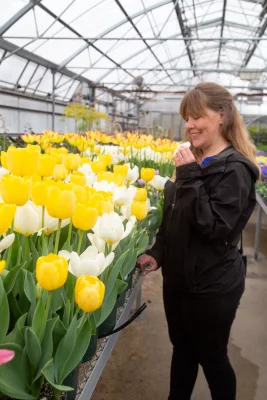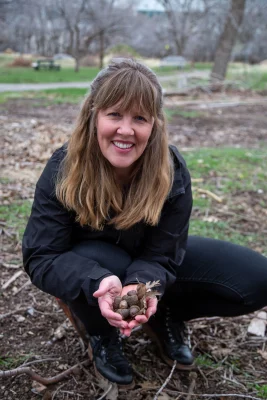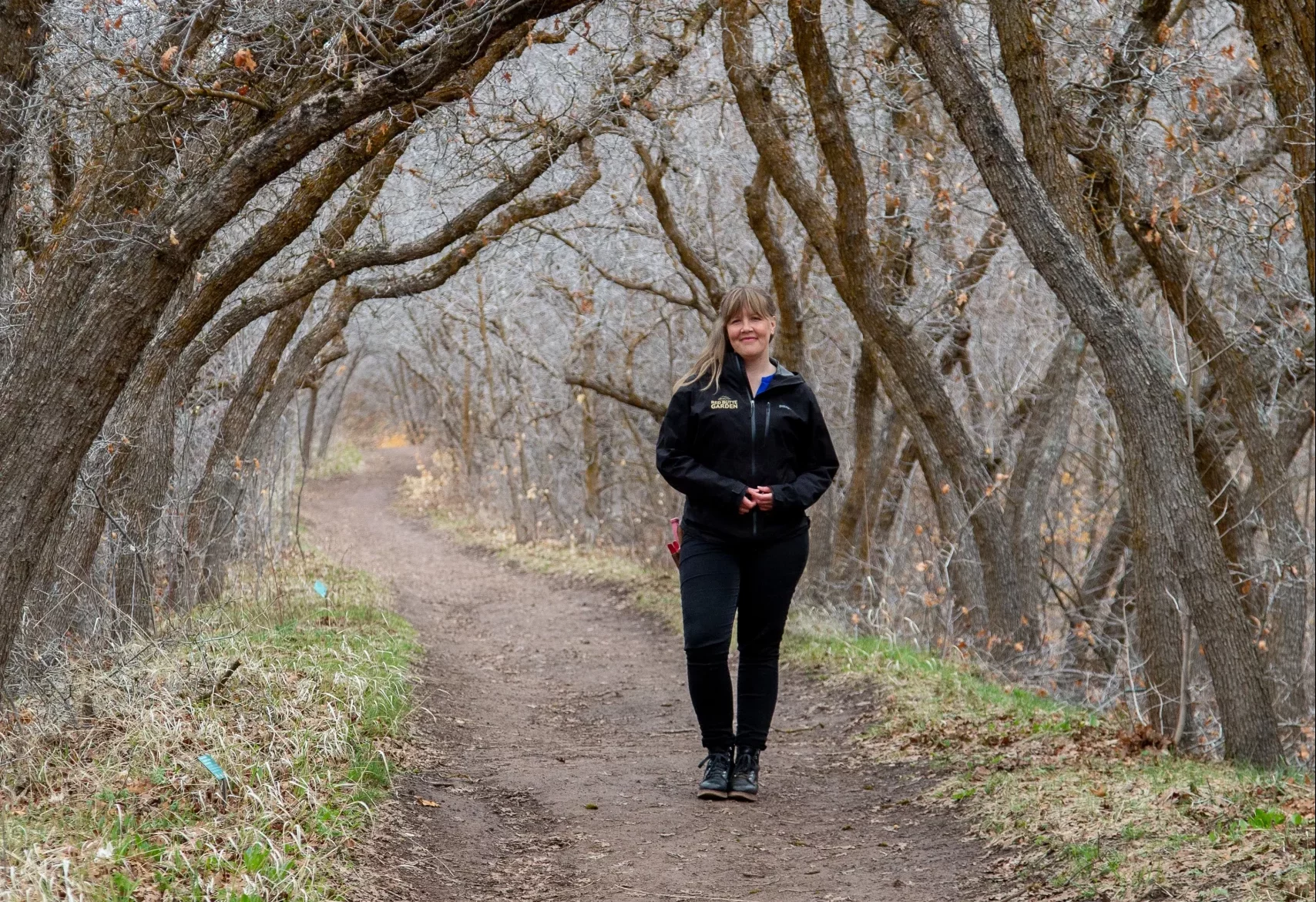How Ecosystems Feed Each Other: Wild Foraging for Invasive Plants
Food: Interviews & Features
“We have 74,000 individual plants. I do not know every plant; it’s impossible,” Lynsey Nielson tells me as we stroll through the Ruth P. Eccles Herb Garden. As a lead horticulturist at Red Butte Garden, Nielson designs and maintains about five acres of land, including the herb, medicinal and fragrance gardens. Throughout her 14 years working there, she has taught classes about edible flowers, preserving fresh herbs and gardening in the Wasatch through the University of Utah’s Continuing Education program.

Nielson was first introduced to flowers as a source of food through her grandmother, a gardener who cultivated daylilies. “As a kid, it just blew my mind,” she says of the realization that every part of the daylily could be eaten. She grew up in Bountiful, where she frequented the nearby foothills. “I think people’s plant stories often start when they’re young,” Nielson says. “It fits with this idea of ecosystems, the way that grandmother trees or mother trees are feeding the babies through their root systems.”
“It fits with this idea of ecosystems, the way that grandmother trees or mother trees are feeding the babies through their root systems.”

Nielson studied environmental science in New Zealand, where she was immersed in a vastly different coastal ecosystem with abundant flora. “Here [in Utah], we are in an ecosystem of scarcity. I think that the way that we talk about foraging here needs to be more reserved, because our plants don’t bounce back in those same ways.”
However, she explains that foraging for invasive species can help Utah’s native plants flourish. Even if you’re only eating the leaves, it’s best to uproot the entire plant in order to control the population. As we talk, Nielson emphasizes the importance of knowing their scientific names: “There are many genuses that use the term ‘sage,’ and not all of them are edible,” she notes.
Garlic Mustard (Alliaria petiolata) is a noxious weed that grows wild in Summit County, with a spicy, horseradish-like flavor. Curly Dock (Rumex crispus) is another invasive green, related to Swiss chard and commonly found in sidewalk cracks, which boasts a bitter, lemony taste. Common Purslane (Portulaca oleracea)’s tart, succulent leaves are “one of the most nutritious greens on the planet” that can be stir-fried, pickled or blended into soup.
“They’re all delicious, as long as you know the population hasn’t been treated with an herbicide,” Nielson warns, or saturated with heavy metals from a nearby roadway’s chemical runoff. Many native plants are edible, too, but these resources must be shared with pollinators and other wildlife: “Everything that we harvest out of a native space, we’re potentially taking from the mouth of Bambi,” she says.
As far as how she uses foraged ingredients in the kitchen, Nielson prefers to nibble on plants as she moves through the garden. “I’m a gardener, so I’m a grazer,” she confesses. When she does take the time to cook, though, she makes salads using edible flowers, as well as teas and other beverages—she once taught a class about botanical cocktails at Red Butte in collaboration with Waterpocket Distillery.
“I’m a gardener, so I’m a grazer.”
In the harsh Utah winter, foraging possibilities are far more limited, but plant life can still be found if you know where to look. Oak trees (Quercus) can yield a sweet, nutty flour from their acorns that “tastes better than wheat flour” once the tannins are leached off. Prickly pears (Opuntia) are very recognizable cacti whose sweet fruit and natural pectin make for delicious jams, jellies and even mead.
The very first step for anyone hoping to try their hand at foraging, Nielson says, is to wrap your head around plant identification. “Pick a plant, or a set of plants, and just go out and see if you can ID them,” she advises. “Maybe don’t eat them right away. Find your spots, hike around, go on trips of discovery and see what you can see.”
Find more foraging resources and information about upcoming classes at redbuttegarden.org. “It’s such a powerful and empowering thing to know that if you were in a [survival] situation, you would know what your options are and that you can be safe about it,” Nielson says.
Read more about locals who work with the land:
Tossing Out Hunger With Waste Less Solutions
Water From The Wasatch Front: The Most Important Ingredient for Utah Distilleries
